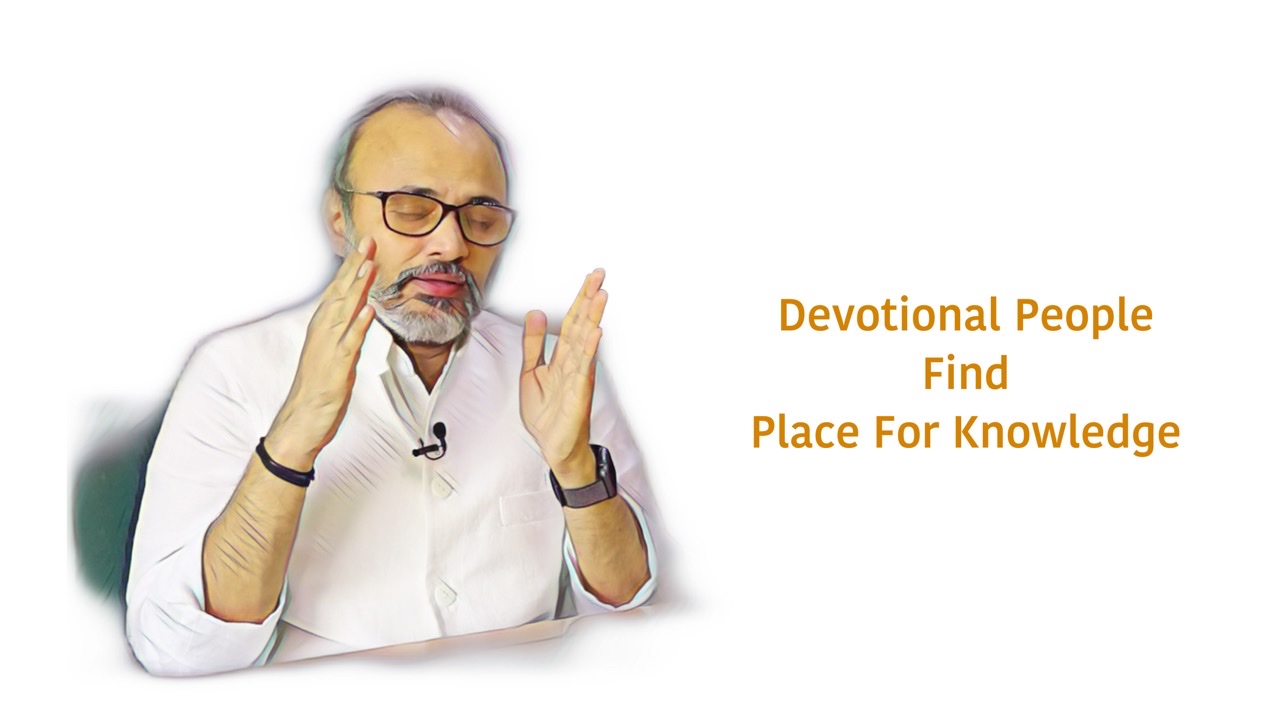
Devotional People’s Secret
3 years ago By Yogi AnoopDevotional People Find Place For Knowledge
Devotional people usually say that the soul stays in the heart, a Hatha Yogi says it is in the pituitary gland. Raj Yogi believes that the soul rests in the middle of the Eyebrows(Third Eye). Some people try to find the almighty in the sky, different people with different beliefs have different ways and means to find soul and the supreme.
A person of devotional nature gives an imaginative interpretation of the soul in which the senses and the mind are made to function as if it were a movie. There is a renunciation, a sense of letting go in their imagination, due to which their senses start getting loose. Usually people see the virtues of sacrifice and love in some person and cannot understand the principle of renunciation without associating it to person. People often consider some Guru as a great renouncer and tries to evolve and grow through that.
The feeling of renunciation and detachment is temporary in people, as soon as they get on with their life, they are again sucked in by vices like greed, anger, jealousy, etcetera. But a section of Indian sages insisted on devotionalism, so that at least by relocating, some peace, even temporary, could be found.
Note that the more extroverted the nature of a person is, the basis of his contemplation becomes the scene and the place. That is why idols were made for the concentration of common people. Even when he thinks about some unseen power, he makes the basis of it visible somewhere in him. Even if it is sattvik, the basis of its contemplation is visual. Although negativity is seen more in people of extrovert nature. That is why the Indian sages gave Bhakti yoga to bring about sattvikta in people of extroverted nature. He talked about seeing the spirit of renunciation in the gurus, in the Lord, in the sages, in all the living beings and things of this whole world, also in seeing the spirit of devotion, so that in them there is sattvikta, non-violence, contentment, hate and so on.
There were also some such intuitive sages who gave some vision to the seekers in Raja Yoga, Hatha Yoga so that they could reach themselves. In Raja Yoga, the seeker is asked to find the soul in the form of a point within this body. In Hatha Yoga, the pituitary gland itself is said to be self-conscious. It is said to be the holiest place. That is because somewhere in the mind only a visual form is going on. Therefore, by concentrating on the pituitary gland, the mind becomes calm.
If in the Upanishad a thorough study is done on the sages, then many in it considered water to be the conscious self, that is because there is life in water. Some considered air to be the conscious element. Some accepted the existence of consciousness in the sky element.
Undoubtedly, all these discoveries were among the most important ones by the Indian sages, not done previously by anyone in the world in the past. They also discovered such points inside the body which were the reservoirs of energy. These sages and explorers discovered extreme science like Jnana Yoga, which gives a complete vision of the truth itself.
These sages also said that no path can be called completely wrong, people of different nature and values live in this society, they have to choose the sadhna according to their own nature, and gradually through the same sadhna, one has to climb the second ladder of knowledge. They said that a person of devotional nature is at least searching for some place to find himself, and people are such that they do not even know about life. After all, while searching, a day will come when he will get the knowledge that he is complete in himself, everything is inside him, he is the universe. Finding oneself cannot be an outward exercise or located somewhere outside but an inward activity placed in the innermost depths of the consciousness.
Recent Blog
Copyright - by Yogi Anoop Academy
